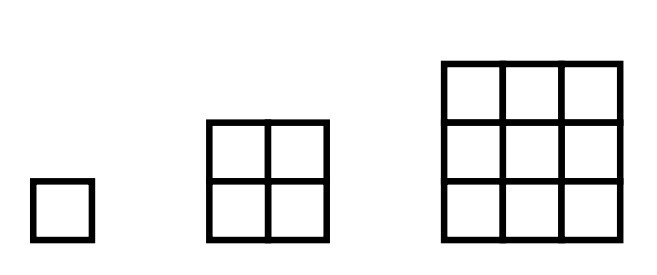Problem:
A sequence of squares is made of identical square tiles. The edge of each square is one tile length longer than the edge of the previous square.

The first three squares are shown. How many more tiles does the seventh square require than the sixth?
Answer Choices:
A.
B.
C.
D.
E.
Solution:
To build the second square from the first, add tiles. To build the third from the second, add tiles. The pattern of adding an odd number of tiles continues. For the fourth square, add ; for the fifth, add ; for the sixth, add and for the seventh, add .
The number of additional tiles needed is .
To build the second square from the first, add tiles. To build the third from the second, add tiles. The pattern continues and .
Answer: .
The problems on this page are the property of the MAA's American Mathematics Competitions